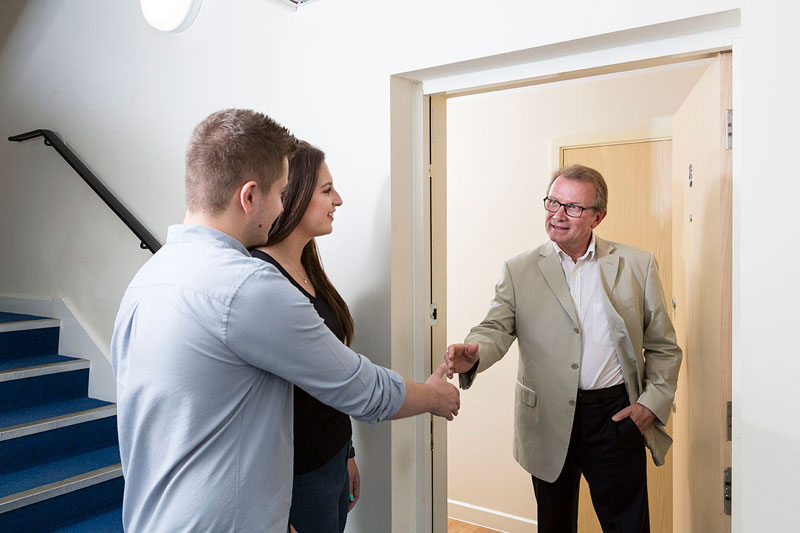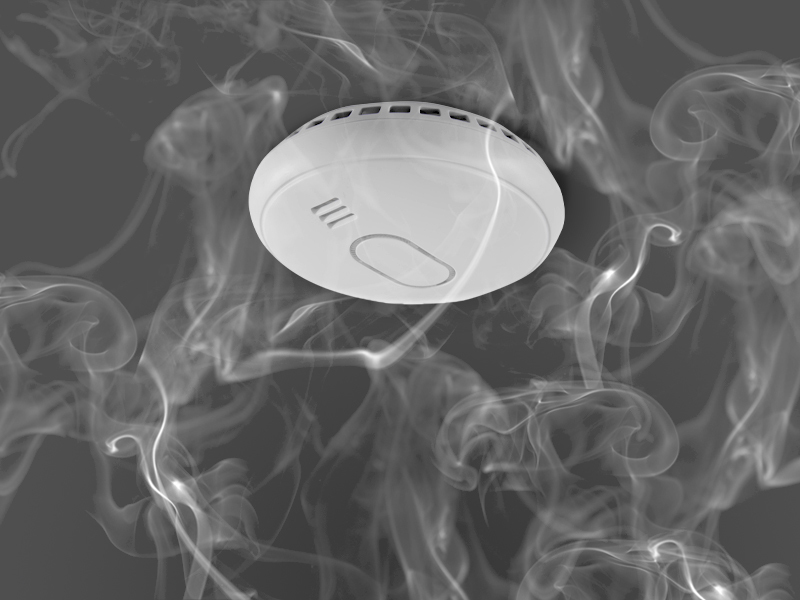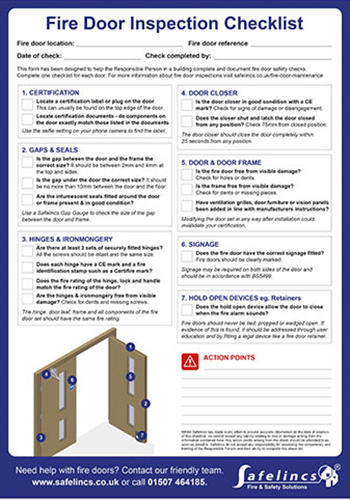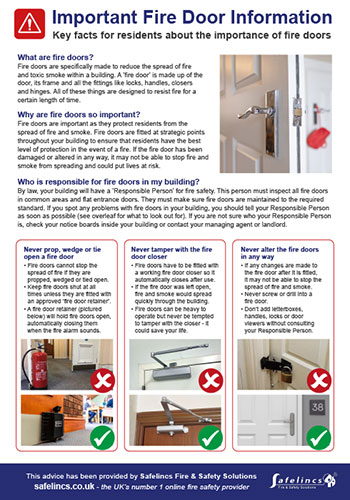-
Contact
Sales & Customer Service
0800 612 6537 support@safelincs.co.uk Live ChatDelivery Enquiries
0800 077 6149 - Resources
Fire & Safety Solutions
CALL OUR TEAM NOW 0800 612 6537
Lines open today 8am - 6pm
Free Delivery
on 100s of Products
Secure Payments
with our fast checkout
Live Customer Chat
Available Now
30 Day Accounts
for Public Sector
5 Star Customer Feedback
Landlord Fire Safety Guide
Buy-to-let self-contained properties
HMOs, student halls of residence and hostels
New Scottish smoke alarm regulations
New Welsh smoke alarm regulations
Landlords are responsible for the fire safety of their tenants. The following regulations govern the standards that have to be met in rental homes.
What are the fire safety regulations for rented homes?
Building regulations Approved Document B is applicable to fire safety during the building’s construction or renovation in England and Wales. When the property was built or renovated will determine which version of the regulations apply sas there have been alterations to Building Regulations numerous times since 1992.
After the building is occupied, the management of fire safety is governed by the following regulations:
The Housing Act 2004 (including Housing Health and Safety Rating System HHSRS)
The Regulatory Reform (Fire Safety) Order (2005)
Fire Safety (England) 2022 Regulations
The Smoke and Carbon Monoxide Alarm (England) Regulations 2015
Fire Safety Risk Assessment - Sleeping Accommodation
Renting Homes (Fitness for Human Habitation) (Wales) Regulations 2022
If the property is furnished or partially furnished the following regulations will apply:
Furniture and Furnishings (Fire Safety) Regulations 1988/1989, 1993 and 2010
Single-household properties
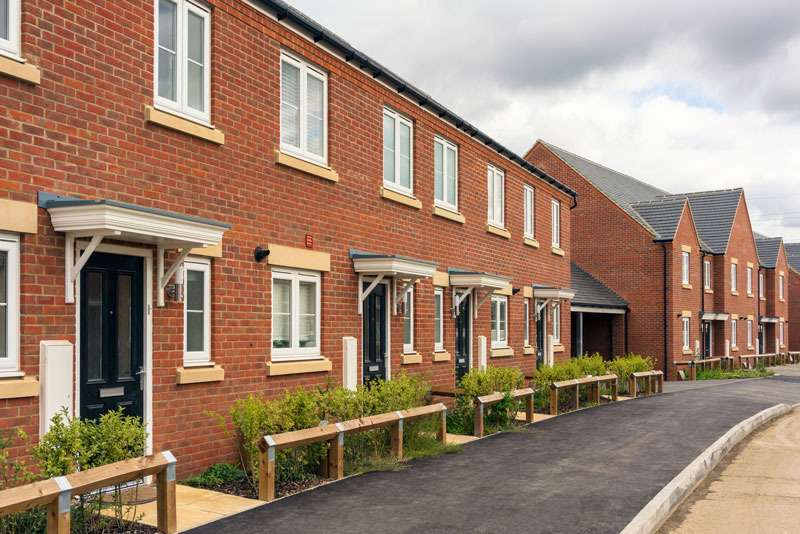
A brief summary of the regulations in England:
Smoke & CO detection
By law, the minimum requirements are;
- Smoke alarms should be installed on every habitable level of the property and should be tested and in working order at the start of every tenancy.
- Carbon monoxide alarms should be installed in every room with a solid fuel burning appliance (for example coal fire or log burner).
If the rental property has more alarms than the minimum requirement above in order to comply with Building Regulations Approved Document B, the alarm system should not be downgraded to the minimum.
New CO alarm regulations announced on 23rd November 2021 require any rental home to be fitted with a carbon monoxide alarm if it has a fixed appliance such as gas boiler or gas fire. These regulations are due to be added to the The Smoke and Carbon Monoxide Alarm (England) Regulations 2015.
Additional recommendations;
- Install a heat alarm in the kitchen of every property.
- Gas and oil appliances can also be the cause of carbon monoxide, so it is recommended to install a CO alarm in any room with a gas or oil appliance such as a boiler, heater, oven or fire.
Adding smoke, heat and CO alarms to the inventory at the start of the tenancy can be a good way to document that the alarms are present and in working order in line with the above regulations.
The regulations do not specify the type of alarms required (eg. Battery or mains powered), this should be determined by the type and size of property.
Smoke and CO alarm options:
- Radio-interlinked alarms give occupants the best chance of escape as they can provide a warning to all parts of the property as soon as a fire is detected.
- Long life battery alarms will mean that the smoke or CO alarms will not require batteries to be changed for the lifetime of the alarm.
Ensure the correct sensor type is installed in each location - heat alarms should be used in the kitchen to avoid false alarms, whilst optical alarms are suited to the hallway, landing, bedrooms and main living areas.
Ensure all alarms are installed following the manufacturer’s instructions. Follow guidance on positioning your smoke alarms correctly. By installing the correct sensor in the correct location, you will minimise the risk of false alarms.
Further information can be found in our guide to The Smoke and Carbon Monoxide Alarm (England) Regulations 2015
Smoke alarm and carbon monoxide alarm regulations for rented homes in Wales
New regulations come into effect in Wales on 15th July 2022 for rented accommodation. The new Welsh regulations stipulate that to be fit for human habitation all rented homes must:
- Have mains-powered, inter-linked smoke alarms fitted on every floor of the property.
- Have a carbon monoxide alarm in each room that contains a carbon-fuelled appliance or flue.
View suitable alarms and more information on the regulations in our dedicated alarms for rented homes in Wales section.
The regulations state that the landlord is responsible for the fitting and maintenance of the alarms. Landlords should therefore take care to note the installation date and the date at which the alarms would need to be replaced as well as checking and maintaining alarms regularly. Heat alarms for the kitchen are covered in the Welsh government guidance and should be given consideration. As around 60% of all house fires in the UK begin in the kitchen, it is therefore advisable to fit an interlinked heat alarm in the kitchen, especially in larger properties.
Where properties do not meet these new regulations, the property would be deemed unfit for human habitation. The tenant would not be expected to pay rent during any period deemed ‘unfit’.
Fire doors
All flat front doors should be self-closing fire doors if they lead out into an internal common area such as a corridor. If you are unsure about whether a door is a fire door, read our guide to identifying fire doors. Regularly check the fire door closers are functioning and have not been tampered with. If the disengaging of door closers or wedging open of fire doors is a problem in the property, read our top tips on reducing fire-door non-compliance by residents.
Fire doors may be required to protect escape routes such as stairwells in a property where there is a loft conversion. This is in accordance with building regulations.
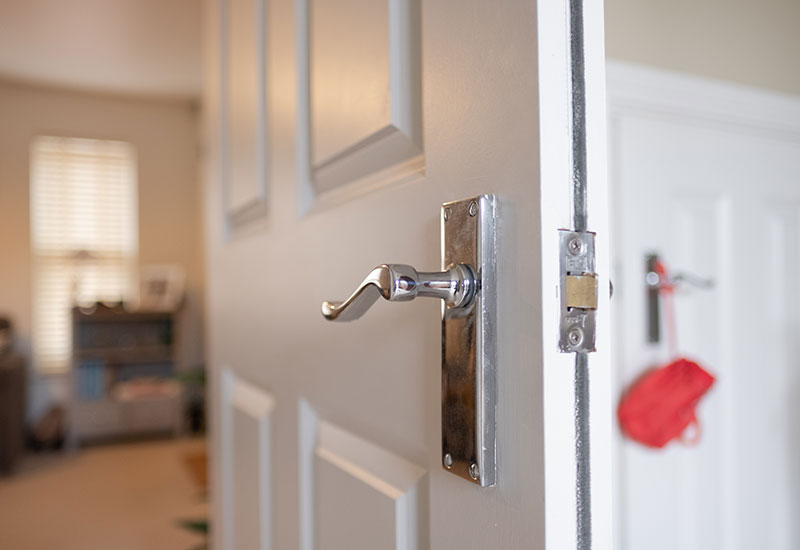
Fixtures, fittings and furnishings
Landlords need to check that any furniture that comes with the property complies with ignition resistance levels.
Electrical equipment listed in the inventory should be checked every 5 years by an electrician.
A gas safety check should be carried out annually on all gas appliances by a gas safe engineer. The engineer will provide a gas safe certificate which should be given to new tenants at the start of each tenancy and within 28 days of the annual service each year.
HMOs (Student houses, houses with multiple tenants)

Fire Risk Assessments
Landlords of houses of multiple occupancy need to have a fire risk assessment. The Fire Safety Order requires a regular fire risk assessment to be carried out for common areas such as hallways and corridors, especially if any alterations such as decoration or refurbishment have taken place.
For HMOs (House of Multiple Occupancy), student accommodations or hostels, the Sleeping Accommodation document sets out guidance for a landlord, managing agent or Responsible Person to conduct a fire risk assessment.
For peace of mind that the necessary fire safety precautions are in place, a trained professional can carry out a complete fire risk assessment.
In addition to the standard fire safety regulations, fire risk assessments should take into consideration;
- Who is residing at the property and any specific needs (eg. wheelchair users, visually impaired tenants)
- The age, layout and construction of the property
It is advisable to keep track of all fire safety maintenance and assessments using a fire safety log book
A brief summary of the regulations in England:
Fire detection for HMOs
BS 5839 Part 6 sorts fire detection systems into grades to determine the type of system required. It also sets out the category of coverage required by the smoke detection system.
Fire detection grades
For HMOs, BS 5839 Part 6 recommends either a Grade A fire alarm system or Grade D smoke alarms depending on the type and size or property and your fire risk assessment.
Grade A: Fire alarm system made up of detectors and a central control panel, usually with a call point near exits and on landings.
Grade D:
D1: Mains powered smoke or heat alarms with tamper-proof back-up battery
D2: Mains powered smoke or heat alarms with user-replaceable back-up battery
In low risk properties, 10 year sealed battery powered interlinked smoke and heat alarms may be acceptable.
Further, more detailed guidance can be found on which grade and category of alarm does my property need.
Fire extinguishers
In HMOs such as student houses or hostels, a single multi-purpose extinguisher should be located on each floor in common areas. It is also advisable to install a fire blanket in any kitchen areas.
When choosing an extinguisher, all fire risks should be considered. A multi-purpose extinguisher such as water mist is usually a good choice as it can tackle most domestic fires including electrical fires. Traditional steel fire extinguishers such as these require an annual service by a trained engineer in accordance with BS 5306-3.
Service-Free Extinguishers
Alternatively, a P50 Service-Free Water Mist Fire Extinguisher can be installed. The water mist P50 unit tackles a broad spectrum of fire including electrical fires. P50 Fire Extinguishers have an innovative construction that means they do not require annual servicing from a trained engineer. They also have a much longer life span, only requiring a refill after 10 years (in contrast to 5 years with a traditional steel extinguisher). P50 Service-Free Extinguishers can save a lot of money on maintenance costs over their lifetime.
Sprinklers are adequate for larger and complex buildings, and where in smaller buildings a landlord is unable to reduce particular risks with other means, sprinklers can be deployed to compensate for these risks
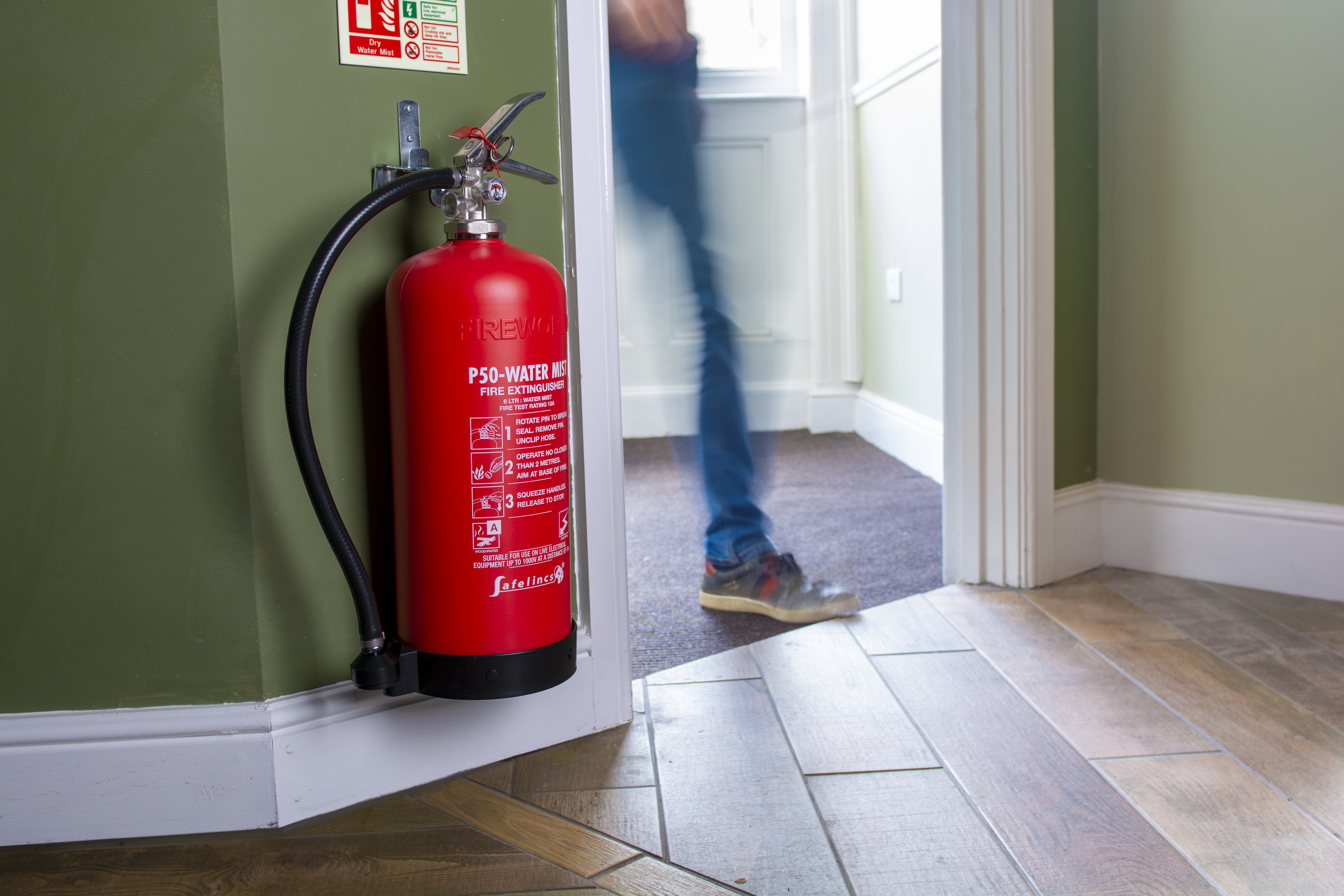
Fire doors
Fire doors are a key part of the system in any building. Your fire risk assessment will determine the necessary fire door rating and the location of fire doors.
As a general rule, all flat front doors, staircase and corridor doors should be self-closing fire doors. In HMOs and buildings that have been converted into flats, an FD30 fire door rating is usually sufficient. Regularly check the fire door closers are functioning and have not been tampered with. Residents may find fire doors heavy to operate and wedging or propping fire doors open is a common problem. Find out what you can do to prevent tenants tampering with fire doors.
Carry out regular maintenance checks on all fire doors in the HMO and ensure any remedial work is actioned quickly. For any HMO where the building is taller than 11m, the Responsible Person is now required to undertake quarterly checks on communal fire doors in accordance with the Fire Safety (England) Regulations 2022. These regulations also require annual checks to be carried out by the Responsible Person on the entrance door to each dwelling.
Fire door signs are only required on fire doors across escape routes and doors to communal kitchens and other communal rooms. They should be marked 'Fire door keep shut'. Where a fire door is legally held open with a fire door holder a ‘keep fire door open safely’ sign should be used.
Find further help and advice relating to fire doors and HMOs
Emergency lighting
Staircases and escape routes must be adequately lit to ensure easy escape in the event of a fire. This means having alternative lighting that can operate even if the mains power supply is failing.
Emergency lighting, which will illuminate the escape route after a mains power failure, is required for buildings larger than two storeys. Smaller buildings do not require emergency lighting if the escape route is short and 'borrowed' light is shining into the building from the outside.
Electrical safety
A qualified electrician must carry out an electrical safety check on any rental property with more than one tenant. This should be done every 5 years.
Gas safety
Landlords have a legal obligation to ensure that all gas supply and appliances are serviced annually by a gas safe engineer.
Carbon monoxide safety
Landlords must install a carbon monoxide detector in every room where there is a solid fuel burning appliance such as a log burner or coal fire. In addition, it is strongly recommended to install a CO alarm in any room with a gas or oil appliances such as a boiler or cooker.
Safe evacuation
Regular checks should be made to ensure escape routes (corridors and exits) are kept clear of obstacles like bikes. This can be a common problem in properties of multiple occupancy and clear signage can help to communicate the issue to residents. Fire safety signage may be required in larger properties that have more than 3 storeys.
Develop an emergency evacuation plan for residents so that they know what to do if the alarm sounds or a fire breaks out. Ensure this is communicated effectively to all tenants.
Social housing
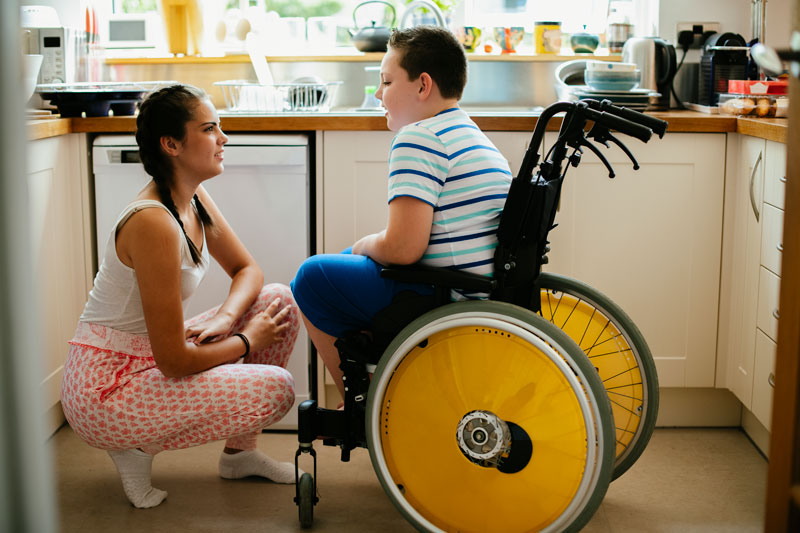
Applicable additional regulations for social housing in England:
Disability Discrimination Act 1995 (DDA)
The term ‘social housing’ includes many different types of property so the rules for this sector are not so clear cut. Any social housing landlord should first conduct a risk assessment using guidance from the . This guidance is relatively old now and so it is advisable to seek further professional guidance for newer properties.
New social homes regulations announced on November 23rd 2021 mean that social housing providers must install smoke alarms in any property. Carbon monoxide alarms must also be fitted into any home that has a fixed appliance such as a gas boiler or gas fire. These new regulations state that property providers are responsible for repairing or replacing alarms if they are told that they are not working. These changes will be contained in the Smoke and Carbon Monoxide Alarm (England) Regulations 2015.
The same rules and regulations apply for social housing landlords of single-household dwellings and HMOs as for private landlords. There may be however further considerations which would be set out in a risk assessment.
Given that 43% of local authority tenants have some form of disability, social housing providers may need to take into account the Equality Act 2010 and the Disability Dscrimination Act 1995. This sets out that anyone with a disability should not be put at a disadvantage with regards to fire safety and escaping in the event of a fire. Additional fire safety measures may therefore be required in any property catering for a tenant with disabilities.
Blocks of flats
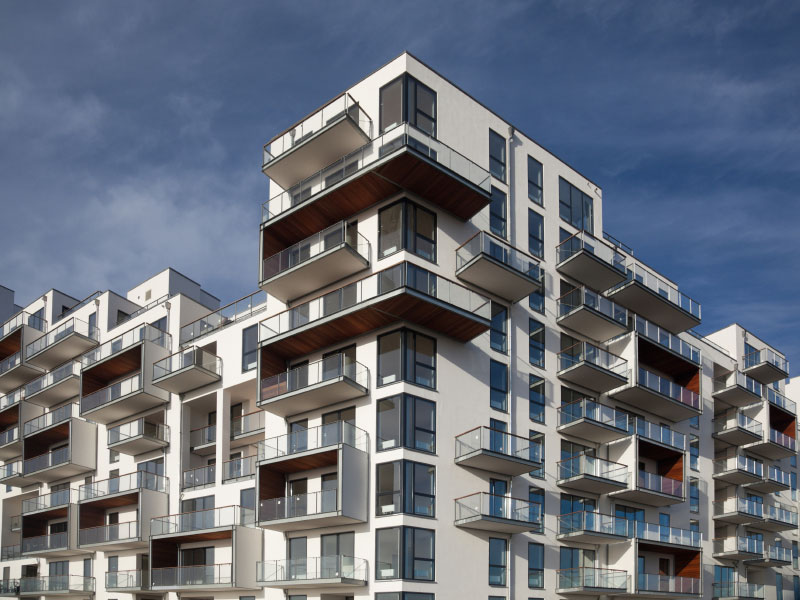
It is a legal requirement that every block of flats has a designated Responsible Person for fire safety. It is the duty of any Responsible Person to make sure there is a valid fire risk assessment, that all residents know about the fire safety procedures and that common areas such as stair wells and corridors are protected from fire.
The Fire Safety (England) 2022 Regulations set out further responsibilities for Responsible Persons with regards to multi-occupied residential buildings. The responsibilities are determined by the height of the building:
For high-rise residential buildings (buildings over 18m in height or more than 7 storeys), additional responsibilities include:
- Installing wayfinding signage that is visible in low lighting.
- Hard copies of the building’s floor plan, a single orientation plan of the building and the name and contact details of the Responsible Person should be stored in a secure document box. This should be easily accessible to fire fighters in an emergency.
- Check all fire fighting equipment and lifts that are for the use of firefighters every month. Inform the FRS if this equipment is not working for longer than 24 hours.
- Share electronic copies of the building plans and information about the external wall system with the local fire and rescue service.
For any multi-occupied residential building over 11m in height, responsibilities include:
- All fire doors in communal areas must be checked every 3 months
- All flat entrance doors must be checked annually (by the Responsible Person)
Record these regular fire door checks with our free downloadable fire door inspection checklist.
In any multi-occupied building, Responsible Persons should provide residents with information about the importance of fire doors and any relevant fire safety instructions. Download our free fire door fact sheet for residents to assist with this process.
Flat residents, or their lease-holders are responsible for installing domestic smoke alarms and CO alarms in their homes. In a freehold flat, the tenant is responsible for ensuring that the flat’s front door is a fire door of an appropriate rating and that it is in good working order. In a leasehold flat, that responsibility is shared between the tenant and leaseholder.
The government is currently consulting on Personal Emergency Evacuation Plans (PEEPs) in high-rise residential buildings. The proposal is for Responsible Persons to prepare a PEEP for any resident who self-identifies as being unable to evacuate unaided in an emergency.
FAQs
Do landlords need a fire risk assessment?
Yes, landlords or Responsible Persons of houses of multiple occupancy, blocks of flats and social housing need to carry out a fire risk assessment. The Fire Safety Order requires a regular fire risk assessment to be carried out for common areas such as hallways and corridors, especially if any alterations such as decoration or refurbishment have taken place.
Does a landlord need a fire safety certificate?
The is no specific fire safety certificate for landlords, however there are a number of fire safety regulations that must be followed to comply with the law and to protect tenants. Landlords are required to have a gas safety certificate and an electrical safety certificate.
Is the landlord responsible for fire extinguishers?
Yes, it is the landlord’s responsibility to provide fire extinguishers in common areas of the property in an HMO. There are no regulations for landlords to provide fire extinguishers in private single-household rental properties.
What are the landlord fire safety regulations in Scotland?
The Scottish fire safety regulations are changing in February 2022. Read our guide to for more information.
Is the landlord responsible for fire safety?
Yes, the landlord is responsible for ensuring the property meets fire safety regulations as set out above. These differ depending on the type of rental property.
Does a landlord need to do a fire safety check?
Landlords must carry out a regular fire risk check (assessment) in HMOs. Free fire risk assessment templates are available or you can use a free online fire safety log book to keep track of fire safety checks.
What are the new smoke alarm regulations for Welsh landlords?
The new regulations Renting Homes (Fitness for Human Habitation) (Wales) Regulations 2022 come into effect on 15th July 2022. Find out what smoke and carbon monoxide alarms your Welsh property needs on our dedicated Alarms Suitable for Welsh Landlords page.
Further reading
LACoRS guide: Housing – Fire Safety Guidance on fire safety provisions for certain types of existing housing
Fire Risk Assessment guidance
Fire safety risk assessment: sleeping accommodation
Guidance for Fire safety in purpose-built blocks of flats
Approved Document B (Fire Safety) Volume 1: Dwellings
BS 9991 Code of practice for fire precautions in the design, management and use of residential buildings in draft
HHSRS Operating Guidance
HHSRS Enforcement Guidance
Gas Safety (Installation and Use) Regulations 1998
Safety signs and signals. The Health and Safety Regulations 1996. Guidance on Regulations
Electrical Equipment (Safety) Regulations 2016
Furniture and Furnishings (Fire) (Safety) Regulations 1988
Download the Furniture Industry Research Association’s guide to the UK regulations
The small print
The above compilation was done to our best knowledge and only reflects a small part of the relevant fire safety guidance. Certain aspects of fire safety in HMOs e.g. surface finishes and floor coverings in escape routes, fire escape windows, fire exit designs, furniture fire resistance, maintenance regimes and general fire prevention have not been addressed. This text cannot be a replacement for reading the original texts. It can also be out of date. This editorial is intended to give the reader a rough overview over this complex area of legislation and recommendations. For a more detailed assessment of individual buildings, the reader is advised to ask a fire risk assessor to visit the premises in question and provide a written assessment.
Reviewed: 23/02/2023 (doc:122 V2.1). Our articles are reviewed regularly. However, any changes made to standards or legislation following the review date will not have been considered. Please note that we provide abridged, easy-to-understand guidance. To make detailed decisions about your fire safety provisions, you might require further advice or need to consult the full standards and legislation.




























